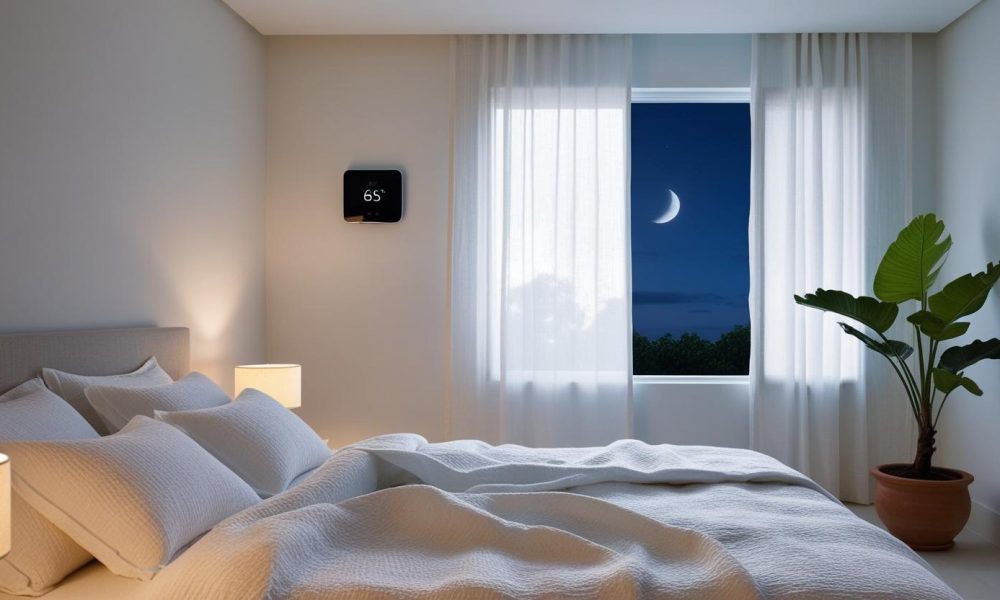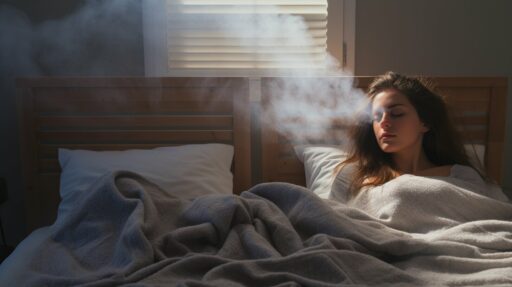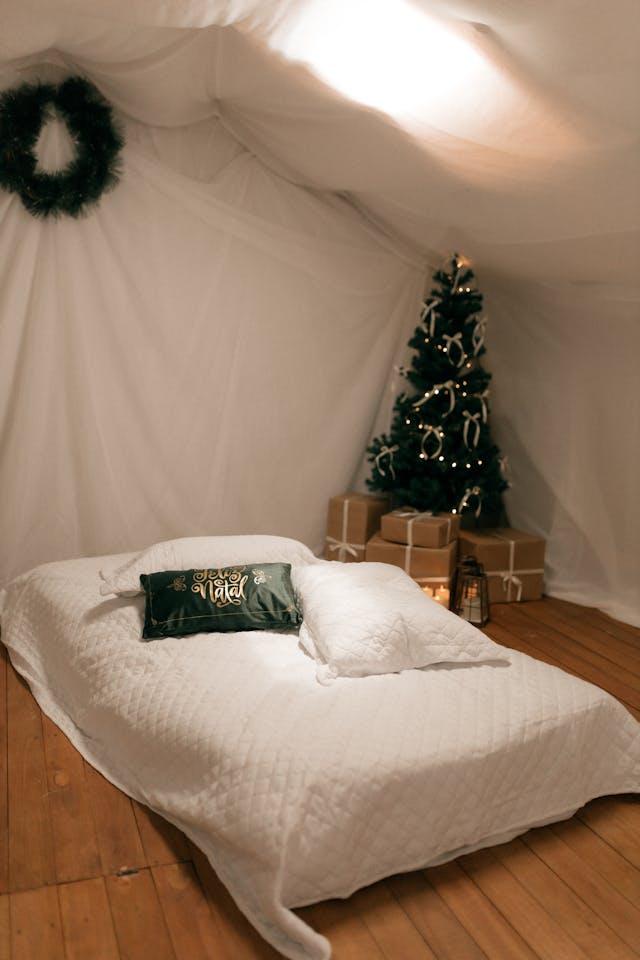Ever find yourself tossing and turning, unable to get comfortable at night? The culprit might be your bedroom Sleep Temperature Regulation. Let’s explore how regulating your sleep environment can lead to better rest, brighter mornings, and a calmer mind. A well-balanced sleep temperature can make all the difference between a restless night and a deeply rejuvenating one.

🧠 Why Temperature Matters for Sleep Quality
Our bodies have a natural rhythm, known as the circadian rhythm, which signals when it’s time to sleep and wake. As bedtime approaches, our core temperature drops slightly, preparing us for rest. If your bedroom is too warm or too cold, it can disrupt this process, making it harder to fall and stay asleep. Maintaining an optimal sleep temperature not only helps you doze off faster but also ensures your body stays in the deeper, restorative stages of sleep for longer.
Benefits of Optimal Sleep Temperature:
- Supports natural sleep-wake cycles
- Enhances deep sleep stages and memory consolidation
- Reduces nighttime awakenings and restlessness
- Promotes quicker sleep onset and smoother transitions between sleep stages
- Improves overall restfulness, mood, and daily energy levels
Just like the perfect cup of tea, finding the right room temperature makes all the difference. It’s that comforting balance between cozy and cool that encourages your body to relax and your mind to unwind.
🌡️ The Ideal Bedroom Temperature
Experts recommend keeping your bedroom between 60–67°F (15.5–19.5°C) for optimal sleep. This range aligns with your body’s natural temperature drop at night, signaling that it’s time to rest. A room that’s too hot or too cold forces your body to work harder to maintain its core temperature, disrupting sleep continuity and overall quality.
Experimenting within this range can help you find your personal comfort zone. Some people find that a slightly cooler room helps them sleep deeper, especially when combined with breathable bedding and light pajamas. On the flip side, if you’re someone who tends to get cold easily, a cozy comforter and some warm socks can be game-changers.
Did You Know? Cooler sleeping conditions can enhance memory consolidation and strengthen immune responses during deep sleep. It’s like giving your brain and body a night spa session.
🛏️ Choosing the Right Bedding
Your bedding plays a significant role in regulating sleep temperature. Materials like moisture-wicking fabrics, breathable cotton, and phase change materials (PCM) can help maintain a comfortable temperature throughout the night. These materials help dissipate heat and wick away moisture, which is especially helpful for hot sleepers or those in warmer climates.
In cooler weather, layering your bedding with light but insulating options allows you to adjust easily as temperatures fluctuate overnight. Think of your bedding as your sleep wardrobe—it should adapt to your body’s needs just like your clothing does during the day.
Additionally, consider eco-friendly bed frames that support sustainable sleep solutions and enhance your temperature control strategy. Natural materials like bamboo or wood can promote airflow, helping your mattress and bedding breathe better.
💨 Tips for Better Sleep Temperature Regulation
Implementing a few simple changes can make a big difference. Here’s how to improve your sleep environment for temperature harmony:
- Set your thermostat between 60–67°F to find your sweet spot.
- Dress in layers to adjust to temperature fluctuations easily throughout the night.
- Use fans or open windows for natural ventilation and fresh air circulation.
- Block sunlight during the day with blackout curtains to keep your room cooler in warmer months.
- Invest in a programmable thermostat to automate changes in room temperature based on the time of night.
- Use an electric blanket or hot water bottle in winter to gently warm the bed before you climb in.
Need help creating your ideal bedroom climate? Check out Sleep Sound Solutions: Better Nights for curated tips and product guides.
🌙 Consequences of Poor Temperature Regulation
Neglecting your sleep environment’s temperature can lead to more than just tossing and turning. Discomfort at night often translates to:
- Sleep onset insomnia: Difficulty falling asleep due to high body temperatures or overheating.
- Sleep maintenance insomnia: Waking up frequently in a cold room or because of night sweats.
- Worsened sleep apnea symptoms: A cooler room may help reduce episodes by supporting easier breathing.
These issues don’t just ruin your night—they can affect how alert, focused, and emotionally balanced you feel the next day. Chronic sleep deprivation linked to poor temperature control can even impact long-term health, including immune function and heart health.
🧵 Personalizing Your Sleep Experience
Combining temperature-regulating bedding, smart technology, and thoughtful bedroom design can transform your sleep. Whether you’re a hot or cold sleeper, achieving thermal neutrality leads to uninterrupted, restful nights. Don’t underestimate the power of tweaking your sleep setup—it’s often the little changes that make a huge difference.
Want to take it a step further? Add a humidity monitor or smart home device to adjust settings automatically. These tools can help maintain consistent comfort without requiring you to wake up and fiddle with the thermostat.
Explore Expert Picks:
- Architectural Digest – Best Eco-Friendly Bed Frames
- Treehugger – Eco-Friendly Bed Frame Guide
- The Spruce – Top Eco-Friendly Bed Frames
🖼️ Visual Guide

🌌 Final Thoughts: Embrace Cooler Nights
Regulating your sleep temperature is a simple yet powerful way to enhance your rest. By aligning your environment with your body’s natural rhythms, you can achieve more efficient sleep and wake up feeling truly refreshed. Cooler nights and cozy layers don’t just feel good—they support better health and a brighter outlook.
So tonight, take a few moments to check your room temperature, feel your bedding, and make small tweaks. Your future well-rested self will thank you.
























